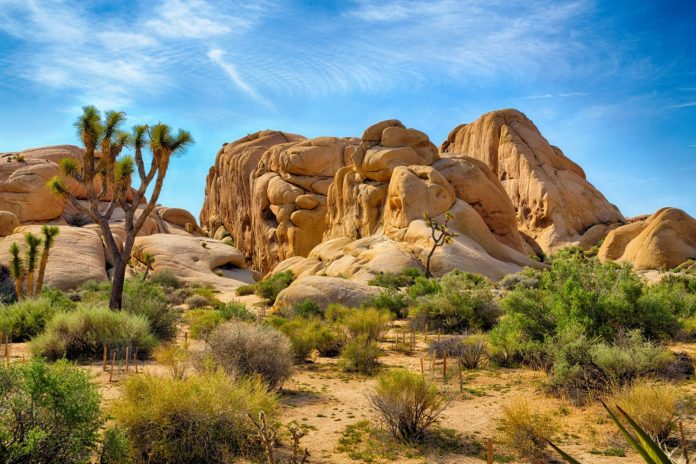The iconic Joshua Tree has been around for two million years but its future is uncertain with scientists warning that it could disappear by the end of the century.

The fragile desert ecosystem of Joshua Tree National Park has never looked more vulnerable. After a government shutdown in January reduced the park’s workforce to a handful of non-essential personnel, the park was left exposed to unmonitored visitors and vandals. What they left behind was significant scarring to the desert soil and long-term damage to the landscape that could take about 300 years to repair. And now a study in the journal Ecosphere – from scientists at the University of California, Riverside – has added more woe by revealing that the park’s namesake trees are in danger of dying out from climate change.

Scientists from UC Riverside wanted to confirm earlier studies that predicted that Joshua trees (which aren’t actually trees but yucca plants) could be extinct by 2021. Headed by plant ecologist Dr Lynn Sweet, the team surveyed 4000 trees in the park and using various methods, discovered that the Joshua tree could only be saved if immediate and radical action is taken now. That means if gas emissions are seriously restricted and summer temperatures are limited to an increase of 5.4°F (3°C), about 19% of the tree habitat would survive after the year 2070.

On the flip side, if no climate action is taken, the park would only retain 0.02% of its Joshua tree habitat, meaning that it will pretty much disappear by 2070. It’s worth noting that the Joshua tree has been around since the Pleistocene epoch and has outlived the mastodon, sabre-tooth tiger and woolly mammoth. Now it could disappear because of climate change caused by human activity.
“The fate of these unusual, amazing trees is in all of our hands,” Dr Sweet said in a statement. “Their numbers will decline, but how much depends on us.”

Many organisations are working to safeguard the future of the Joshua tree and the surrounding Mojave Desert ecosystem such as the Mojave Desert Trust (MDT), Earthwatch and the Joshua Tree National Park Association. Their work is exhaustive and ongoing but absolutely necessary, more so now than ever before. As MDT’s executive director, Geary Hund, tells Lonely Planet: “We are acquiring pristine desert habitat, including in wildlife corridors, to ensure animals and plants can move in response to a changing climate. This means moving up in elevation or north in latitude. We also grow native plants for restoration projects, and our seed bank with its over 500 collections is an insurance policy for the future of the Mojave Desert, protecting against climate change, fire, and drought.”
You can always support any of the above organisations through donations or by volunteering.




